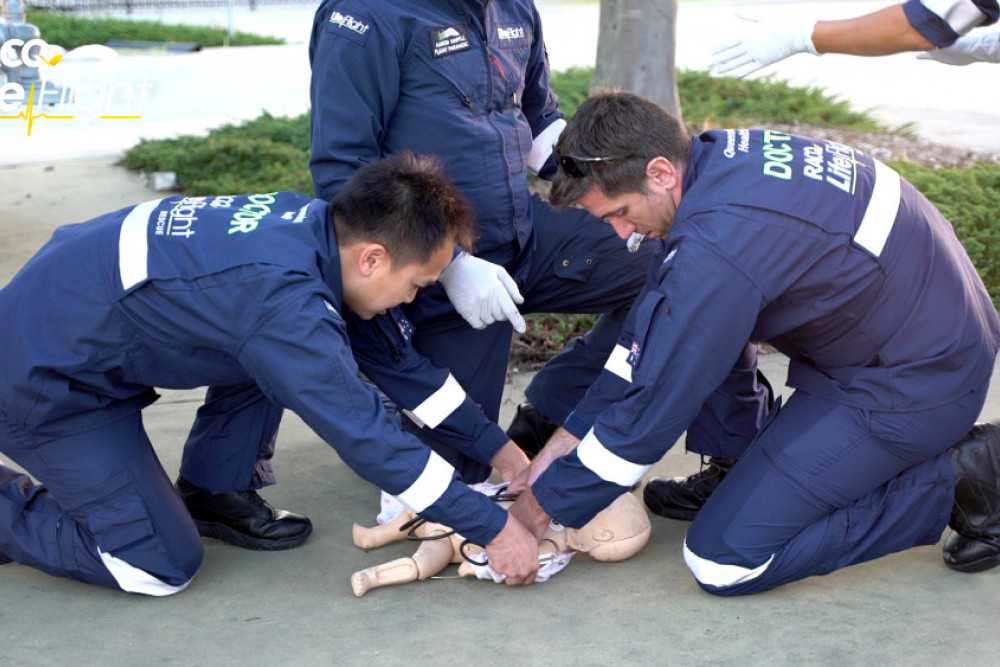5 August, 2021
New RACQ LifeFlight Rescue doctors on the Downs
Two new RACQ LifeFlight Rescue Critical Care Doctors are jumping on board Toowoomba’s rescue choppers, ready to bring advanced medical care to sick or injured patients, often in some of the state’s most challenging locations.

Having worked in both a rural hospital and Toowoomba Hospital’s emergency department, one of the new recruits, Dr Gabriel See, has already seen the difference LifeFlight doctors make, firsthand.
“From a rural doctor’s point of view, it’s always a relief when the LifeFlight doctor comes and takes your patient to a facility with better care,” Dr See said.
“Then from the receiving point of view, the LifeFlight doctor always has everything done well and tied together and gives a good handover.”
Dr See was inspired to take on the retrieval challenge, after hearing other RACQ LifeFlight Rescue doctors talk about the unique experiences of the job and how they manage critical scenarios.
“One of my consultants talked about how he managed to bring a patient from the brink of death, back to life and she came back to thank him after the rehab, he said that was a moment in life that no one could take away,” Dr See said.
He joined 24 other doctors, who will work on aeromedical helicopters and jets across Queensland, at an intensive training week at the LifeFlight Training Academy, to prepare them for the many challenges of retrieval medicine.
“They’re here working for us because they are very experienced doctors, they’re top of their field sort of people, but they’re here doing something they haven’t done before,” RACQ LifeFlight Rescue Chief Aircrew Officer Simon Gray said.
One of the most important – and exciting – parts of training, is learning how to be winched from a chopper.
“We’re introducing them to one of the methods that we can get them to a patient because at the end of the day, that’s fundamentally our main purpose - to get advanced medical care to a patient,” Mr Gray said.
The retrieval registrars were also strapped into a metal helicopter simulator and dunked underwater, in Helicopter Underwater Escape Training (HUET).
“In the highly unlikely event of a helicopter going into the water, it’s going to roll over and flood with water, these doctors are going to have seconds to locate exits, operate exits and get themselves out, so the training’s developed to give them the skills to be able to do that and to stay orientated,” LifeFlight HUET Manager Mick Dowling said.
Back on land, the doctors were put through their paces in a series of simulated emergency scenes they could come across while on the job, at the Queensland Combined Emergency Services Academy at Whyte Island.
They were faced with some of the confronting realities of pre-hospital care, in scenarios including a wild house party where a child had ingested drugs, a worker injured in a confined space on a ship and a fatal car crash.
The majority of the RACQ LifeFlight Rescue Critical Care Doctors’ work is performed on behalf of Queensland Health, under a ten-year service agreement.


